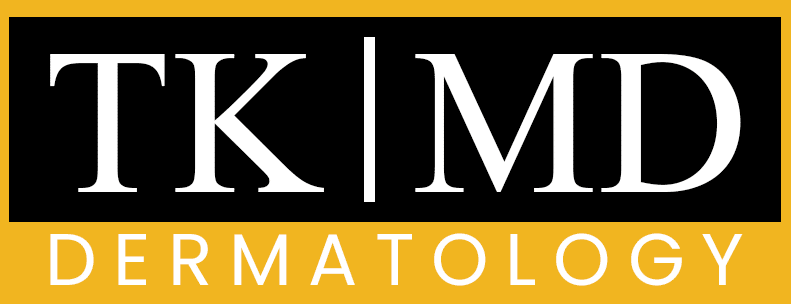Milia are small, white or yellowish cysts that often appear on the skin, resembling tiny pearls. These cysts are typically harmless and are formed when keratin, a protein found in the skin, becomes trapped beneath the surface. While they can occur in individuals of any age, they are particularly common in newborns and young children.
Milia can be mistaken for whiteheads or other types of acne, but they are distinct in their formation and characteristics. Unlike acne, milia do not involve inflammation or infection, making them a unique skin condition that often requires different approaches for management. As we delve deeper into the nature of milia, we find that they can be categorized into primary and secondary types.
Primary milia are usually present at birth or develop shortly thereafter, while secondary milia can arise due to various skin injuries or conditions. Regardless of their origin, milia are generally benign and do not pose any health risks. However, their appearance can be bothersome for some individuals, leading to a desire for treatment or removal.
Key Takeaways
- Milia are small, white bumps that commonly appear on the skin
- Causes of Milia include trapped keratin, sun damage, and certain skin conditions
- Types of Milia include primary, secondary, and milia en plaque
- Milia commonly appear on the face, eyelids, and cheeks
- Preventing Milia involves gentle exfoliation, avoiding heavy skincare products, and protecting the skin from sun damage
Causes of Milia
The causes of milia can be quite varied, and understanding these factors can help us prevent their occurrence. One of the primary reasons for the development of milia is the natural process of skin cell turnover. When dead skin cells do not shed properly, they can accumulate and form cysts beneath the skin’s surface.
This is particularly common in areas where the skin is thick or where there has been damage, such as from sun exposure or injury. Additionally, certain skin conditions, like blistering disorders or prolonged use of heavy creams, can contribute to the formation of milia. Another significant factor that can lead to the development of milia is age.
As we grow older, our skin undergoes various changes that can affect its ability to regenerate effectively. The natural decline in collagen production and skin elasticity can result in a buildup of keratin and dead skin cells, making milia more likely to form. Furthermore, individuals with oily skin may also be more prone to developing these cysts due to the excess sebum that can trap dead skin cells.
Types of Milia

Milia can be classified into several types based on their origin and characteristics. The most common type is primary milia, which typically appear as small, white bumps on the skin without any underlying cause. These are often seen in infants and are usually harmless, resolving on their own over time.
Secondary milia, on the other hand, develop as a result of skin trauma or damage. This can include scarring from injuries, burns, or even certain dermatological procedures that disrupt the skin’s surface. In addition to these primary classifications, we also encounter other specific forms of milia.
For instance, neonatal milia are a type of primary milia that specifically affect newborns and usually resolve within a few weeks. Another variant is referred to as “milia en plaque,” which presents as larger clusters of milia that can occur on the face or other areas of the body. Understanding these different types helps us recognize that while milia may be a common concern, their presentation can vary significantly from person to person.
Where do Milia commonly appear?
Milia can appear on various parts of the body, but they are most commonly found on the face, particularly around the eyes and cheeks. The delicate skin in these areas is more susceptible to the factors that contribute to milia formation. We often notice them on the eyelids or under the eyes, where they can be particularly noticeable due to the contrast with surrounding skin.
Additionally, milia can also develop on the forehead and nose, where oil production may be higher. While facial milia are the most recognized, they can also occur on other parts of the body. For instance, we may find them on the scalp, neck, or even in areas where there has been previous skin trauma or irritation.
In some cases, milia may develop on the arms or legs as well. Regardless of their location, it is essential to remember that milia are generally harmless and do not indicate any underlying health issues.
How to prevent Milia
Preventing milia involves adopting a skincare routine that promotes healthy skin cell turnover and minimizes factors that contribute to their formation. One effective strategy is to regularly exfoliate the skin using gentle exfoliants. This helps remove dead skin cells and prevents them from clogging pores.
We should look for products containing alpha-hydroxy acids (AHAs) or beta-hydroxy acids (BHAs), which can aid in exfoliation without being overly harsh on the skin. In addition to exfoliation, we should also pay attention to our choice of skincare products. Using non-comedogenic products—those that do not clog pores—can significantly reduce the risk of developing milia.
Heavy creams or ointments may feel luxurious but can contribute to clogged pores if used excessively. Instead, opting for lightweight moisturizers that hydrate without overwhelming the skin is advisable. Furthermore, protecting our skin from sun damage by using sunscreen daily can help maintain its overall health and reduce the likelihood of developing milia.
Treatment options for Milia

Treating Milia: Exploring Your Options
Milia can be treated in various ways, depending on their severity and persistence. Fortunately, many individuals with primary milia don’t require treatment, as these cysts often resolve on their own over time. However, for those who find their presence bothersome or persistent, there are several treatment methods to consider.
### Manual Extraction: A Delicate Procedure
One common approach is manual extraction, which should only be performed by a dermatologist or licensed skincare professional. This involves using a sterile needle or a specialized tool to carefully puncture the cyst and remove its contents.
It’s crucial that this procedure is done by a trained professional to avoid complications such as scarring or infection.
### Alternative Treatment Methods
In some cases, chemical peels or laser treatments may also be recommended to promote skin renewal and reduce the appearance of milia. These treatments can help to improve the overall appearance of the affected area, leaving the skin looking smoother and more even-toned.
Home remedies for Milia
For those who prefer a more natural approach to managing milia, several home remedies may offer some relief. One popular method involves using gentle exfoliating agents like sugar scrubs or oatmeal masks to help slough off dead skin cells and promote cell turnover. We can create a simple scrub by mixing sugar with honey or olive oil and gently massaging it onto the affected areas.
Another effective home remedy is incorporating essential oils known for their skin benefits into our skincare routine. Tea tree oil and lavender oil are often praised for their antibacterial properties and ability to promote healing. Diluting these oils with a carrier oil and applying them to areas with milia may help reduce their appearance over time.
However, it’s essential to perform a patch test before using any new product to ensure there are no adverse reactions.
When to see a dermatologist for Milia
While milia are generally harmless and often resolve independently, there are instances when consulting a dermatologist becomes necessary. If we notice an increase in the number of milia or if they become inflamed or painful, it’s wise to seek professional advice. A dermatologist can provide an accurate diagnosis and rule out other potential skin conditions that may mimic milia.
Additionally, if we have tried various home remedies or over-the-counter treatments without success, it may be time to consult a professional for further evaluation and treatment options. A dermatologist can offer tailored solutions based on our specific skin type and concerns, ensuring we receive appropriate care for our unique situation.
Risks and complications of Milia
Although milia themselves are benign and pose minimal risks, there are potential complications associated with improper treatment methods. Attempting to extract milia at home without proper knowledge or tools can lead to scarring or infection. It’s crucial that we avoid picking at or squeezing these cysts as this can exacerbate inflammation and lead to further complications.
Moreover, individuals with certain underlying skin conditions may experience more significant issues related to milia formation. For example, those with chronic skin conditions like eczema may find that their milia become more pronounced during flare-ups. Understanding these risks allows us to approach treatment with caution and prioritize professional guidance when necessary.
Milia in infants and children
Milia are particularly common in infants and young children, often appearing shortly after birth. In most cases, neonatal milia resolve spontaneously within a few weeks without any intervention required. These tiny cysts are typically harmless and do not cause discomfort for the child.
As parents or caregivers, it’s essential to recognize that this condition is normal and usually temporary. While we should monitor our child’s skin for any changes or signs of irritation, it’s generally unnecessary to seek treatment for neonatal milia unless they persist beyond a few months or show signs of infection. In such cases, consulting a pediatric dermatologist can provide reassurance and guidance on appropriate care.
Living with Milia
Living with milia can be an exercise in patience and understanding as we navigate this common yet often misunderstood skin condition. While they may be bothersome aesthetically for some individuals, it’s important to remember that milia are typically harmless and often resolve on their own over time. By adopting preventive measures such as proper skincare routines and being mindful of product choices, we can minimize their occurrence.
For those who find themselves struggling with persistent milia or seeking treatment options, professional guidance from dermatologists can provide valuable insights tailored to individual needs. Ultimately, embracing our unique skin journey—complete with its quirks like milia—can lead us toward greater self-acceptance and confidence in our appearance.
If you are dealing with skin infections like milia, it is important to seek the expertise of a top skin doctor in Dubai for dermatological care. Dr. Trisha Khanna is a renowned dermatologist who specializes in medical dermatology and skin infections. Her clinic also offers expert wart removal services for those in need. To learn more about her services and how she can help with conditions like milia, visit Dr. Trisha Khanna’s website.
FAQs
What is Milia?
Milia are small, white bumps that commonly appear on the nose, cheeks, and chin. They are often referred to as “milk spots” and are caused by trapped keratin (a protein found in skin cells) beneath the surface of the skin.
What causes Milia?
Milia can be caused by a variety of factors, including skin damage, sun exposure, use of heavy skincare products, and genetic predisposition. They can also occur in newborns and are known as “neonatal milia.”
How are Milia treated?
Milia often resolve on their own, but if they persist, a dermatologist can safely extract them using a sterile needle or scalpel. Over-the-counter exfoliating products containing ingredients like salicylic acid or retinoids may also help to reduce the appearance of milia.
Can Milia be prevented?
To help prevent milia, it’s important to use non-comedogenic skincare products, avoid heavy or greasy products, and protect the skin from sun damage. Regular exfoliation can also help to prevent the buildup of keratin that leads to milia.


